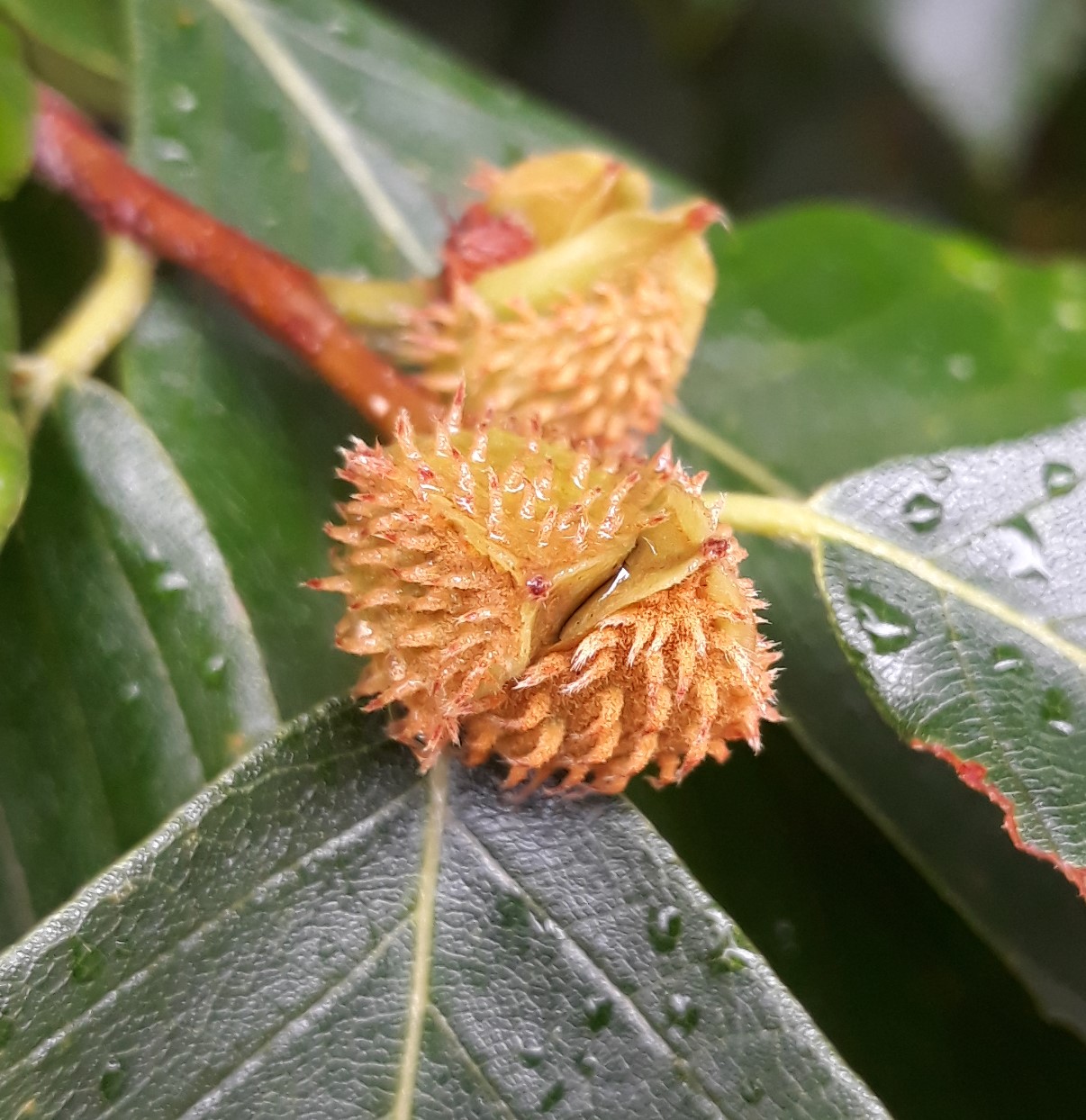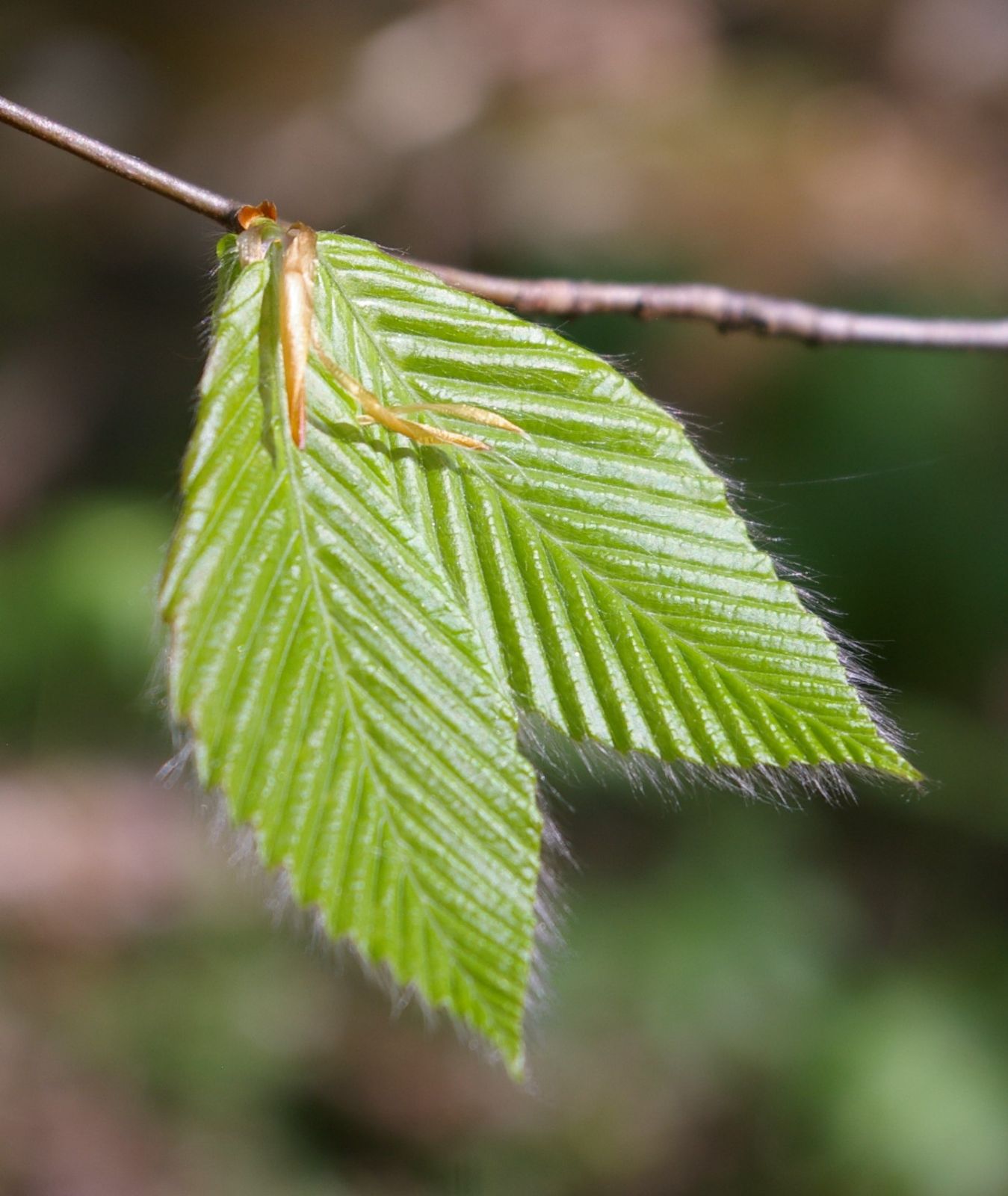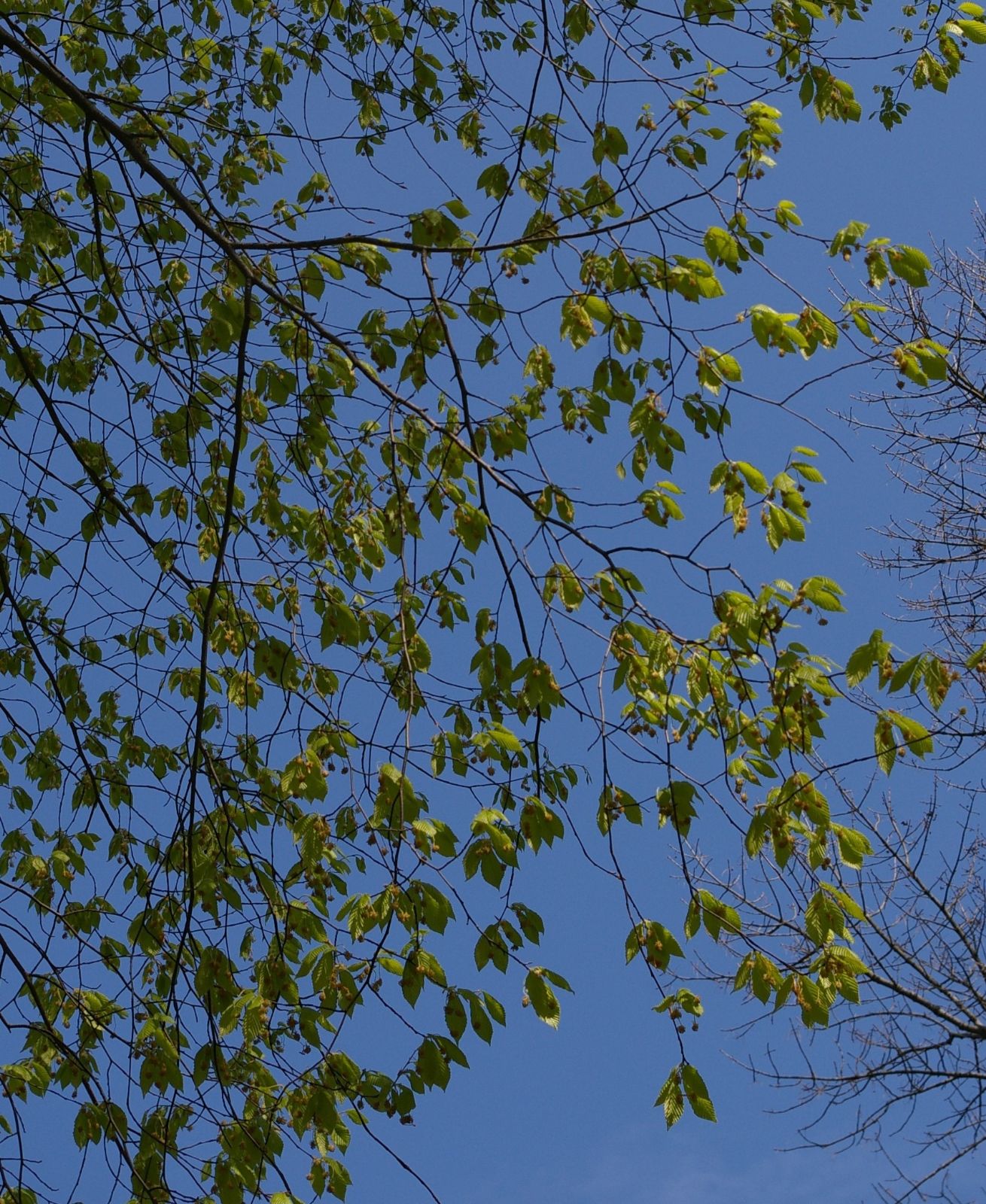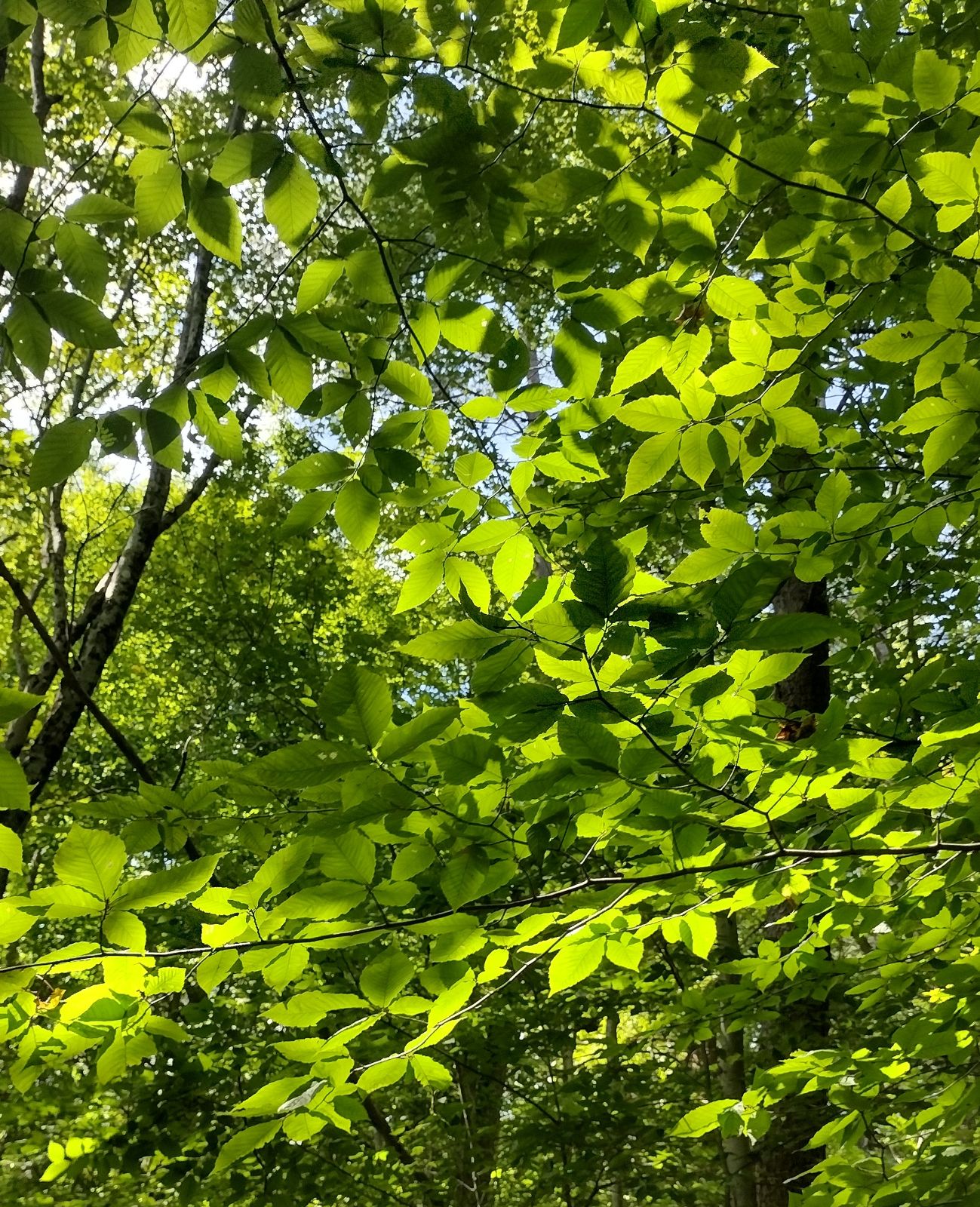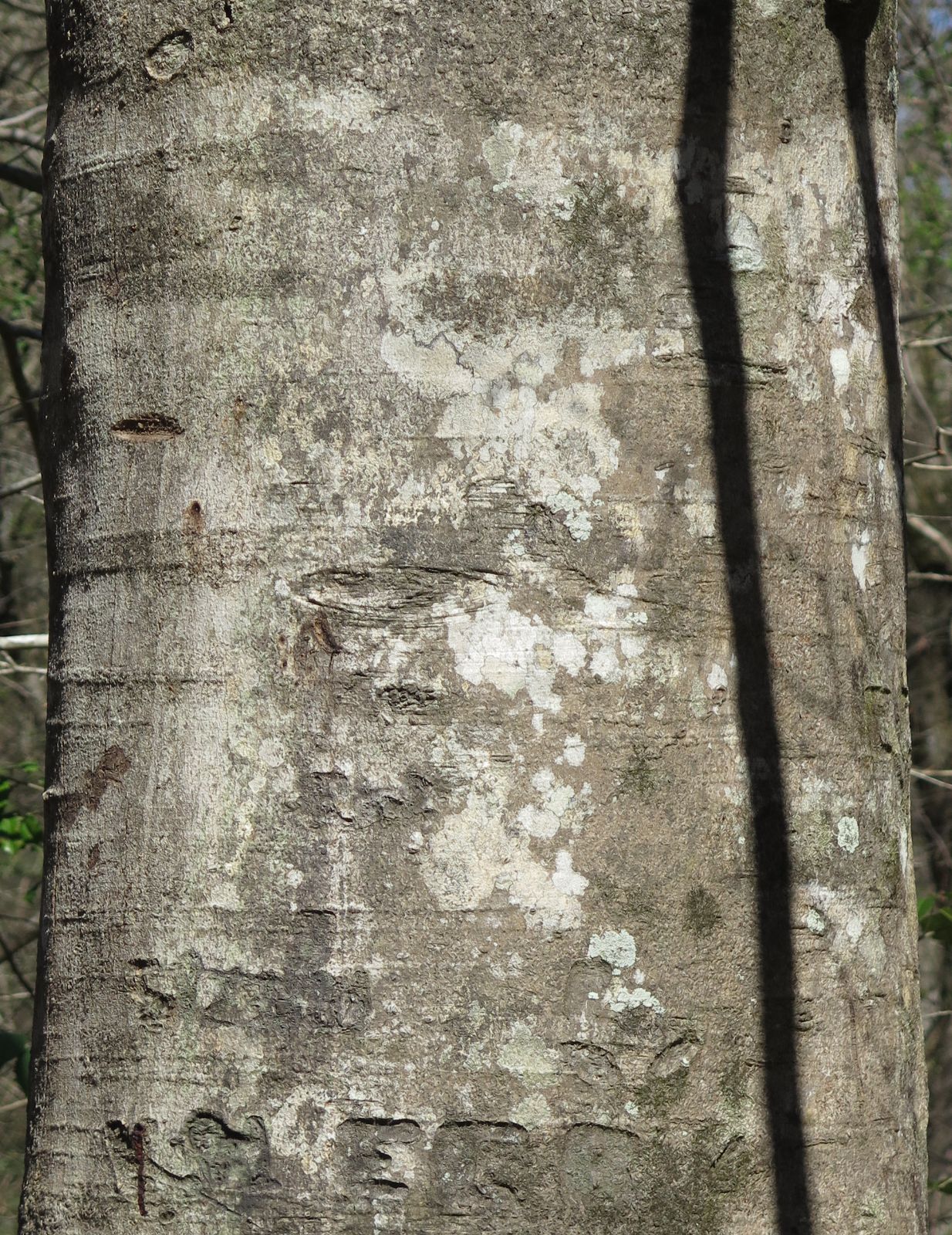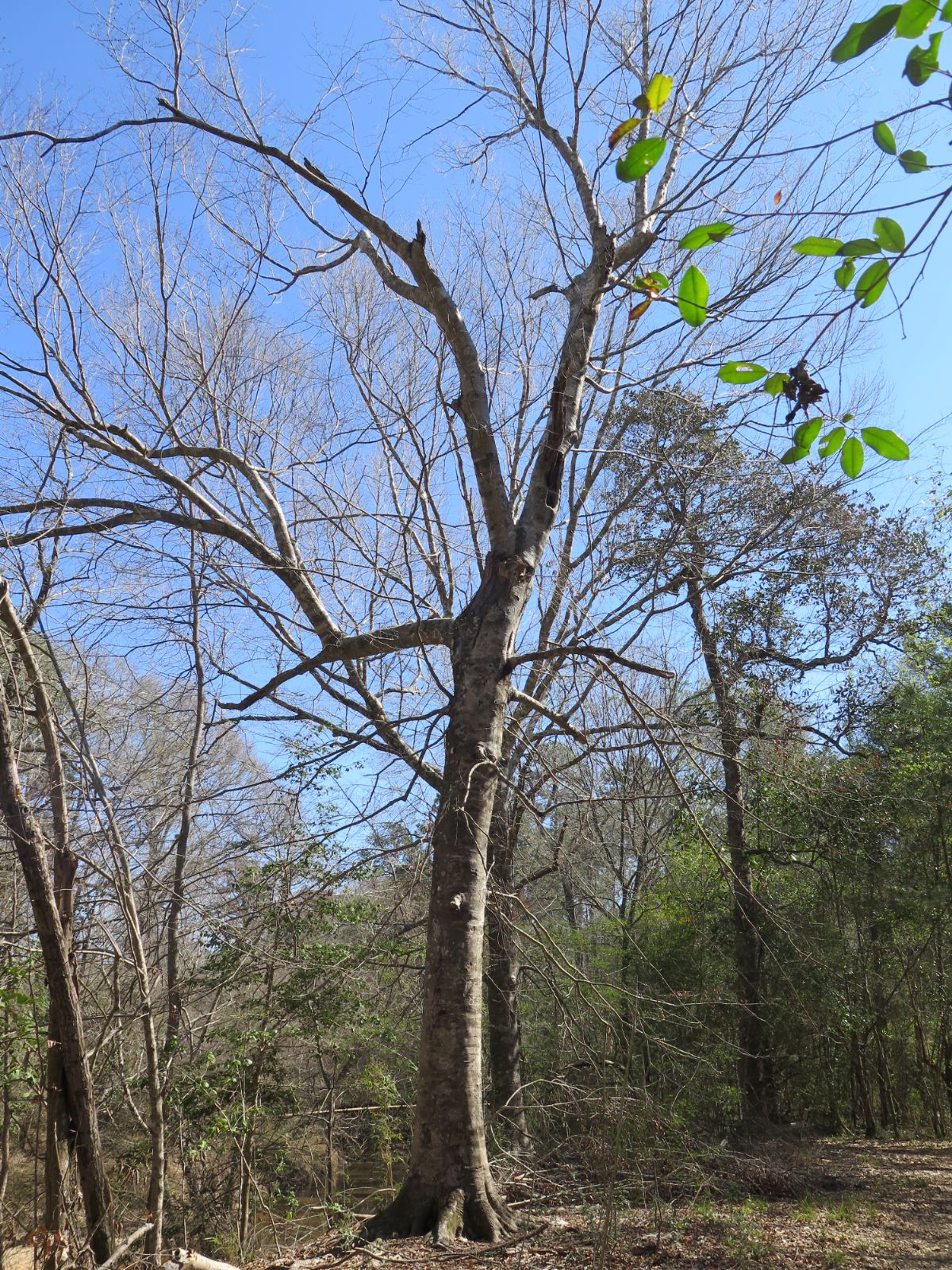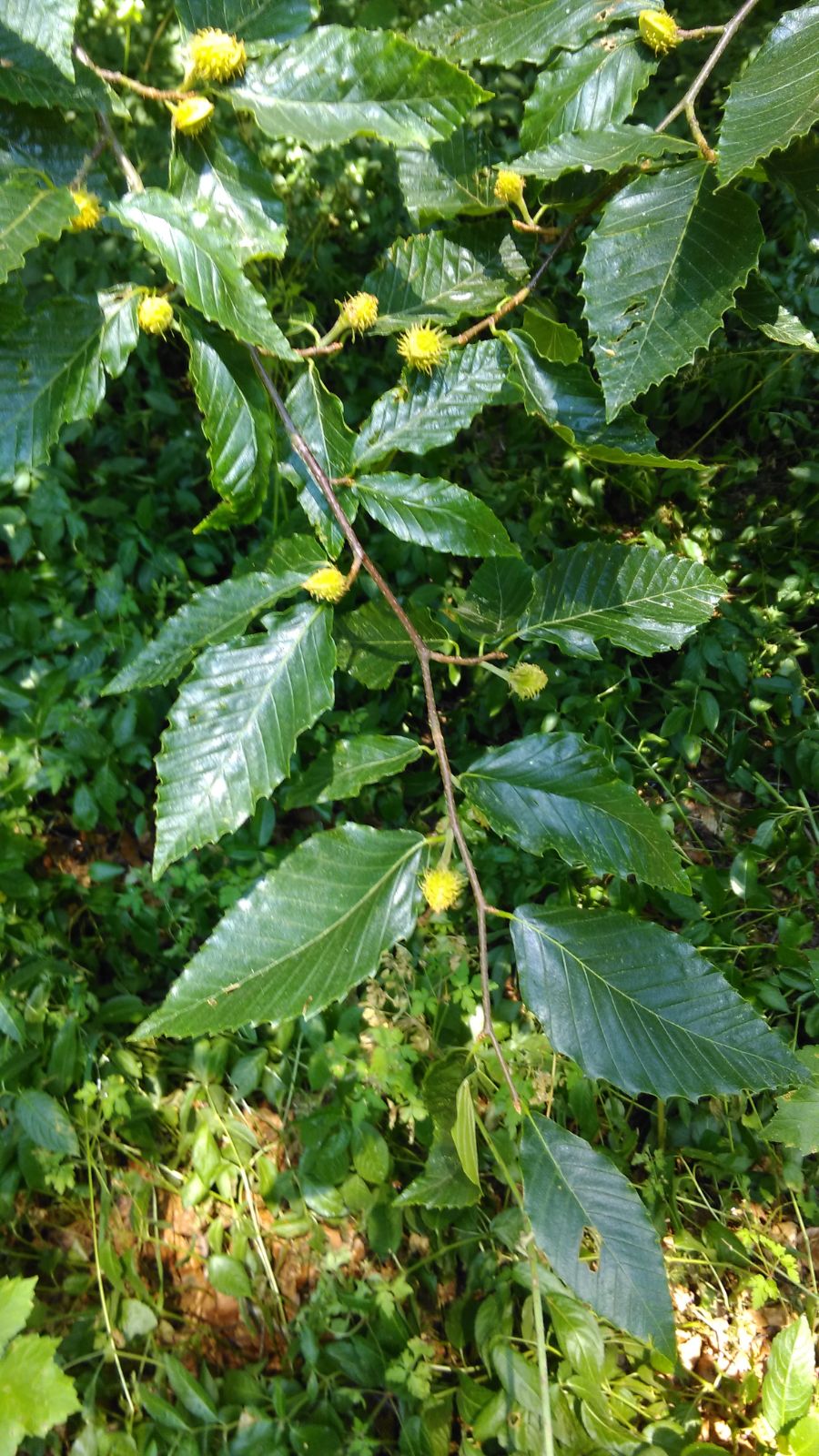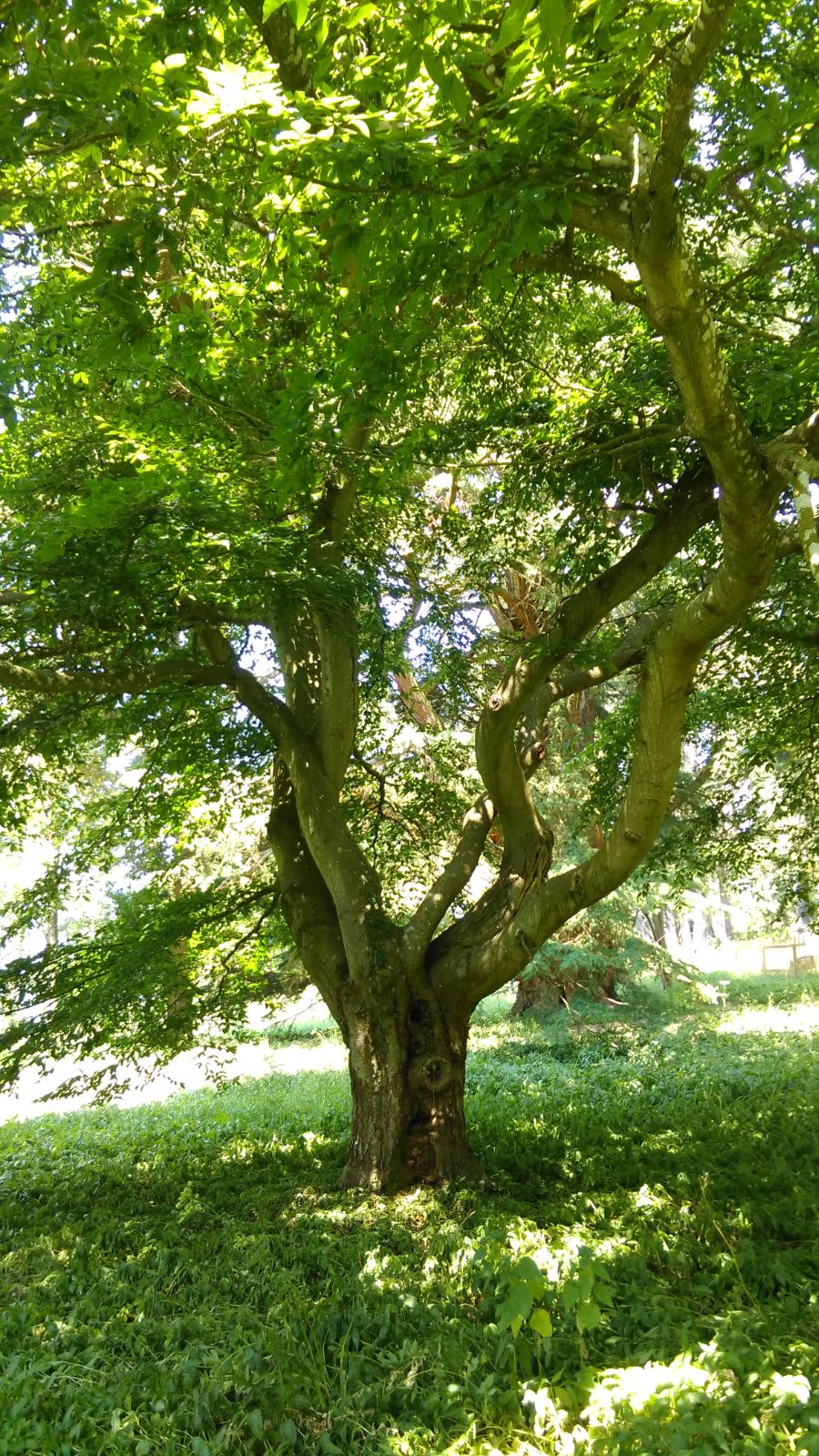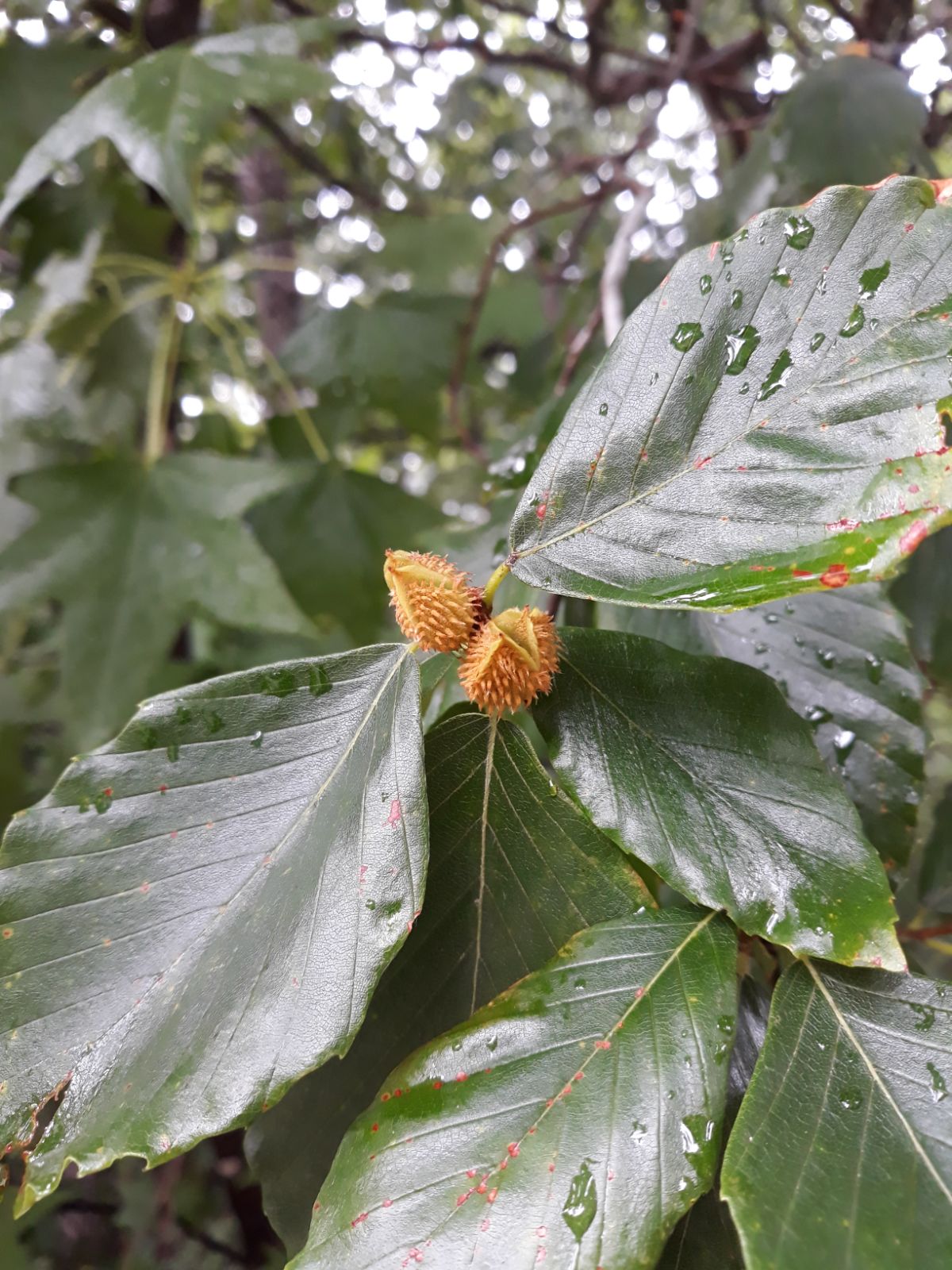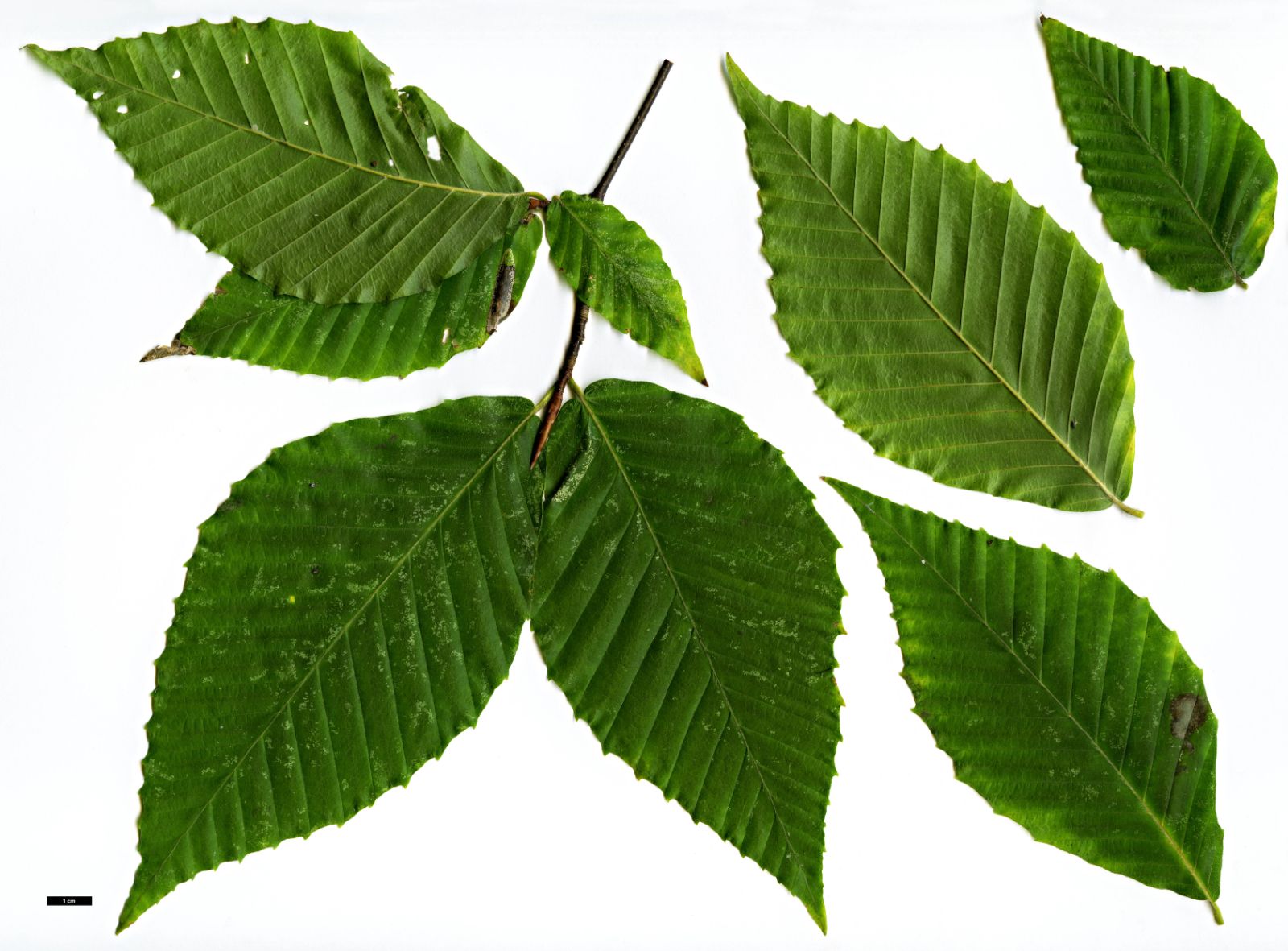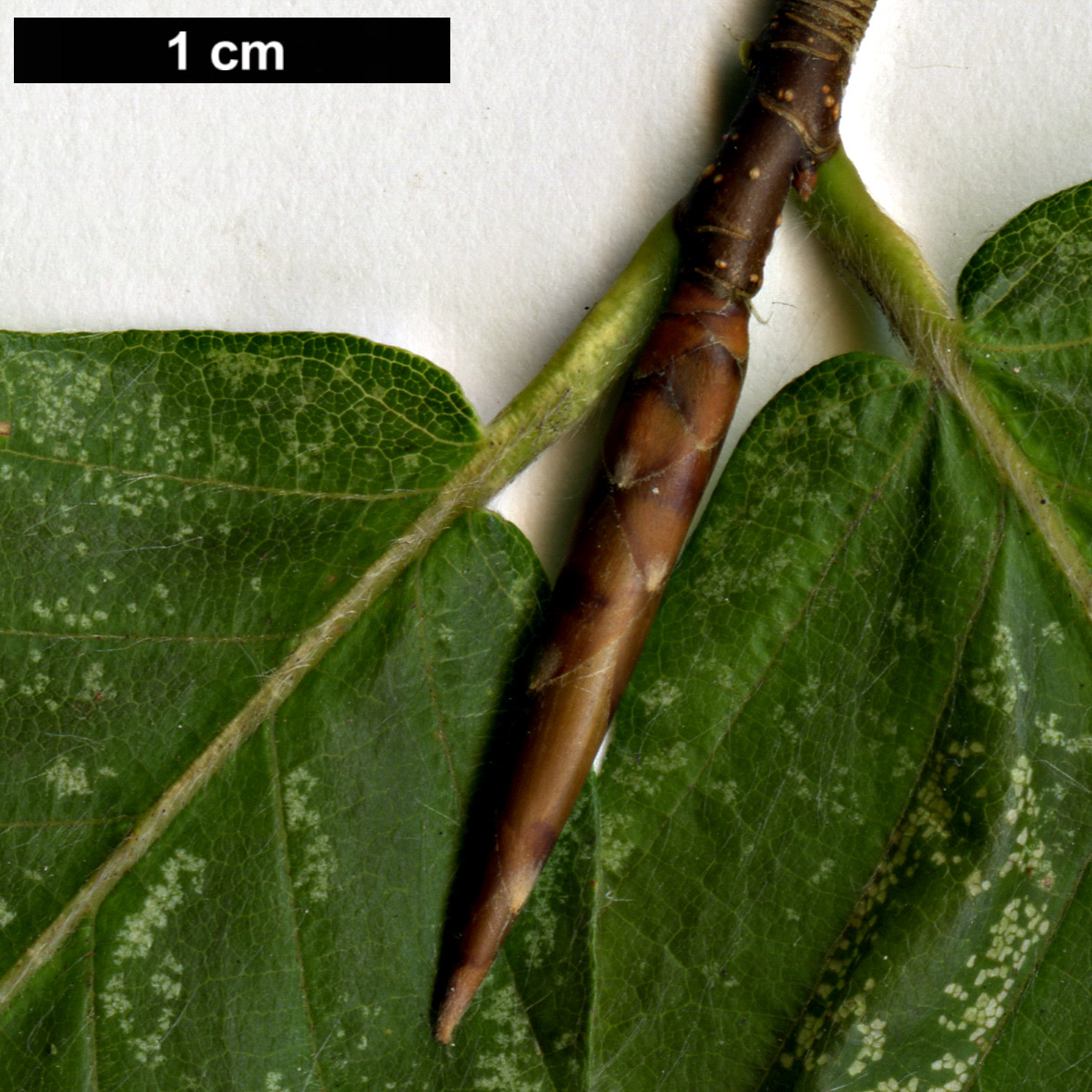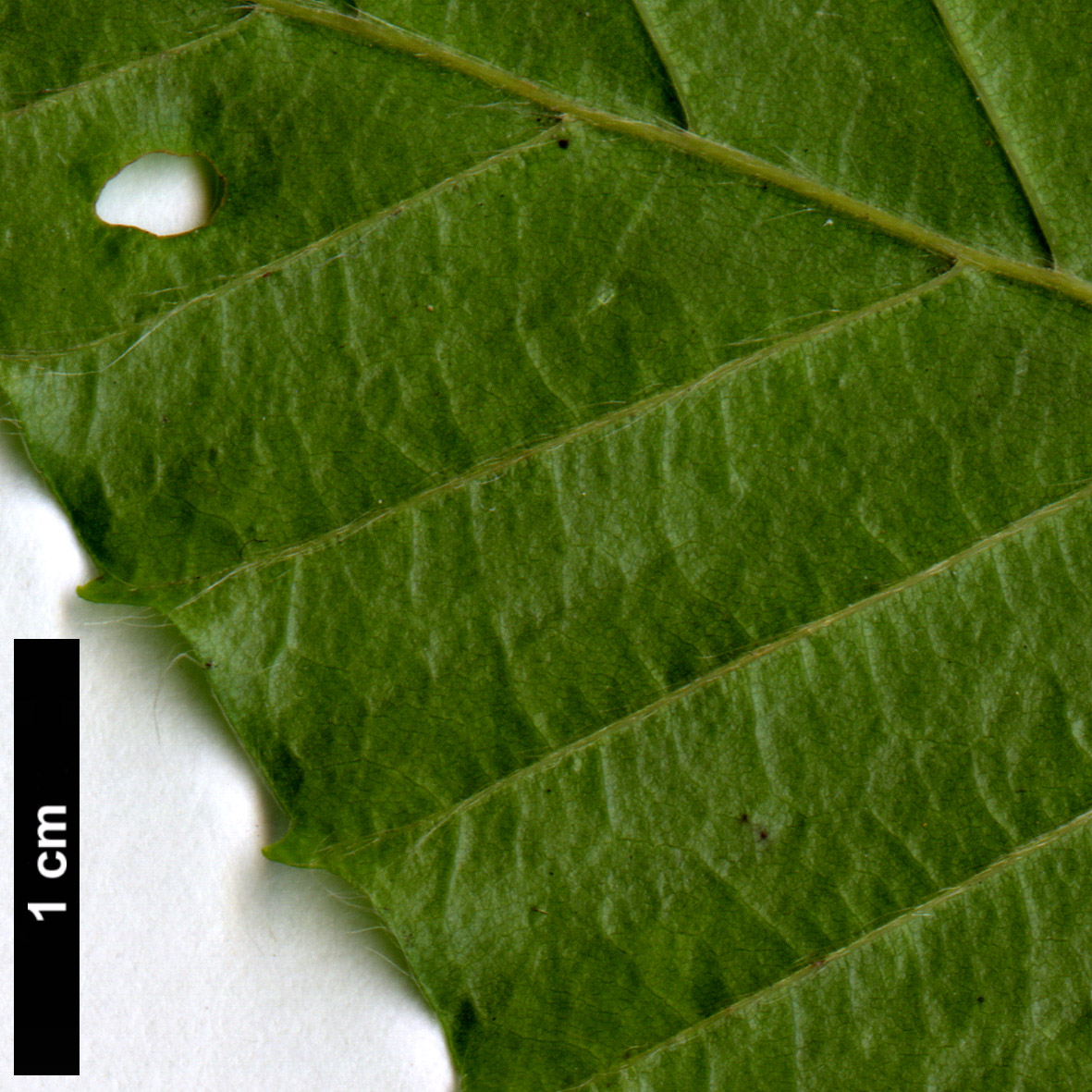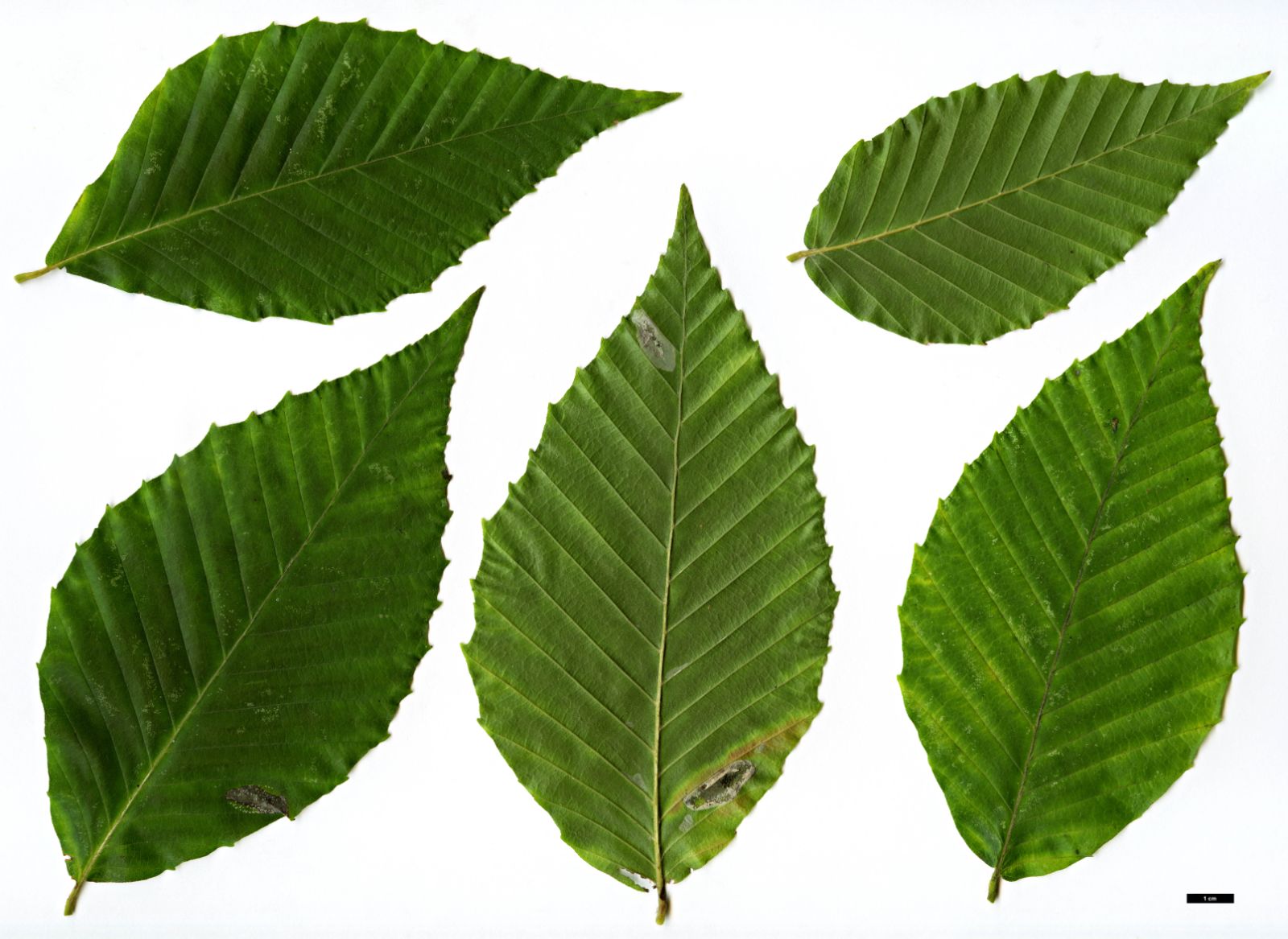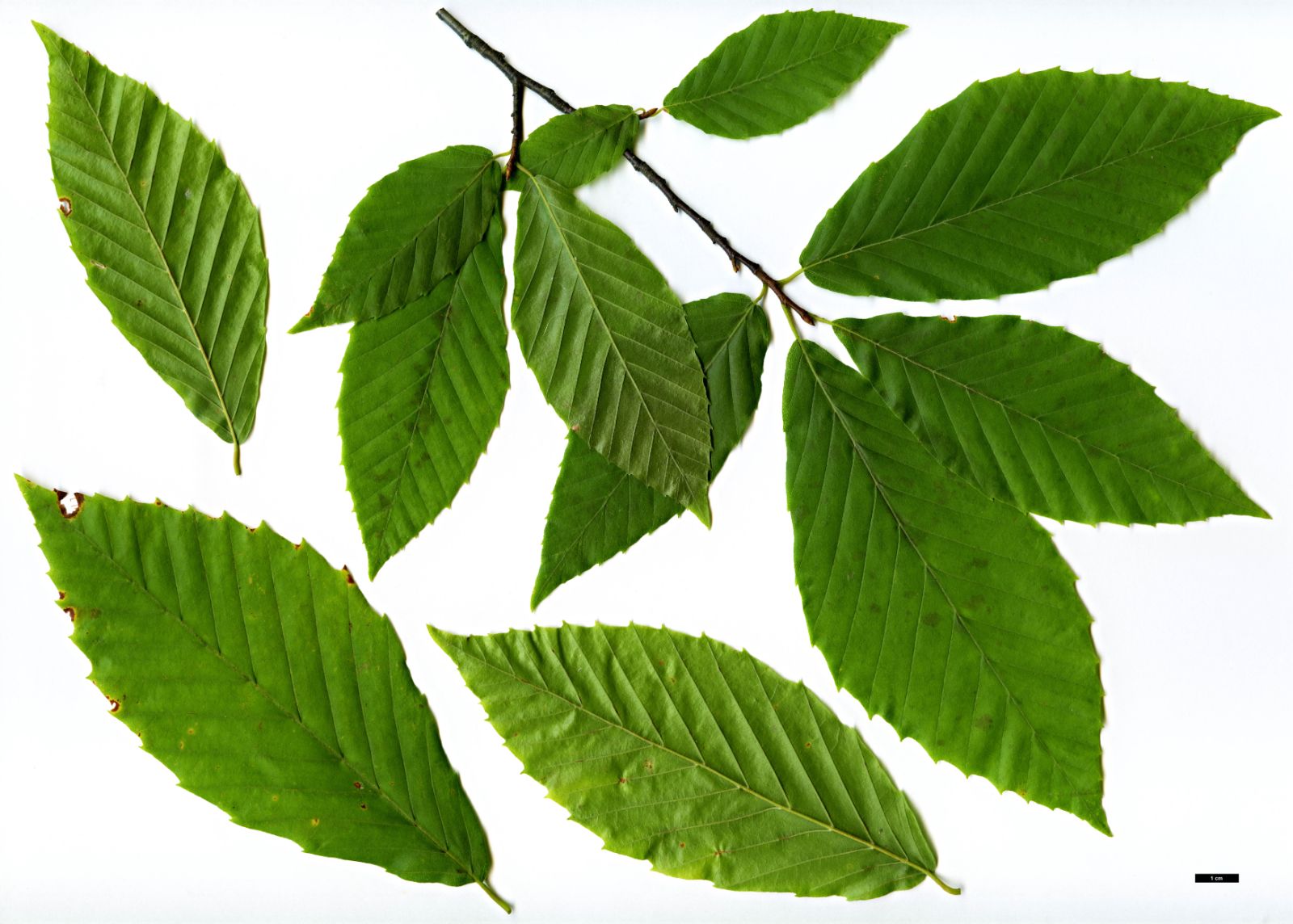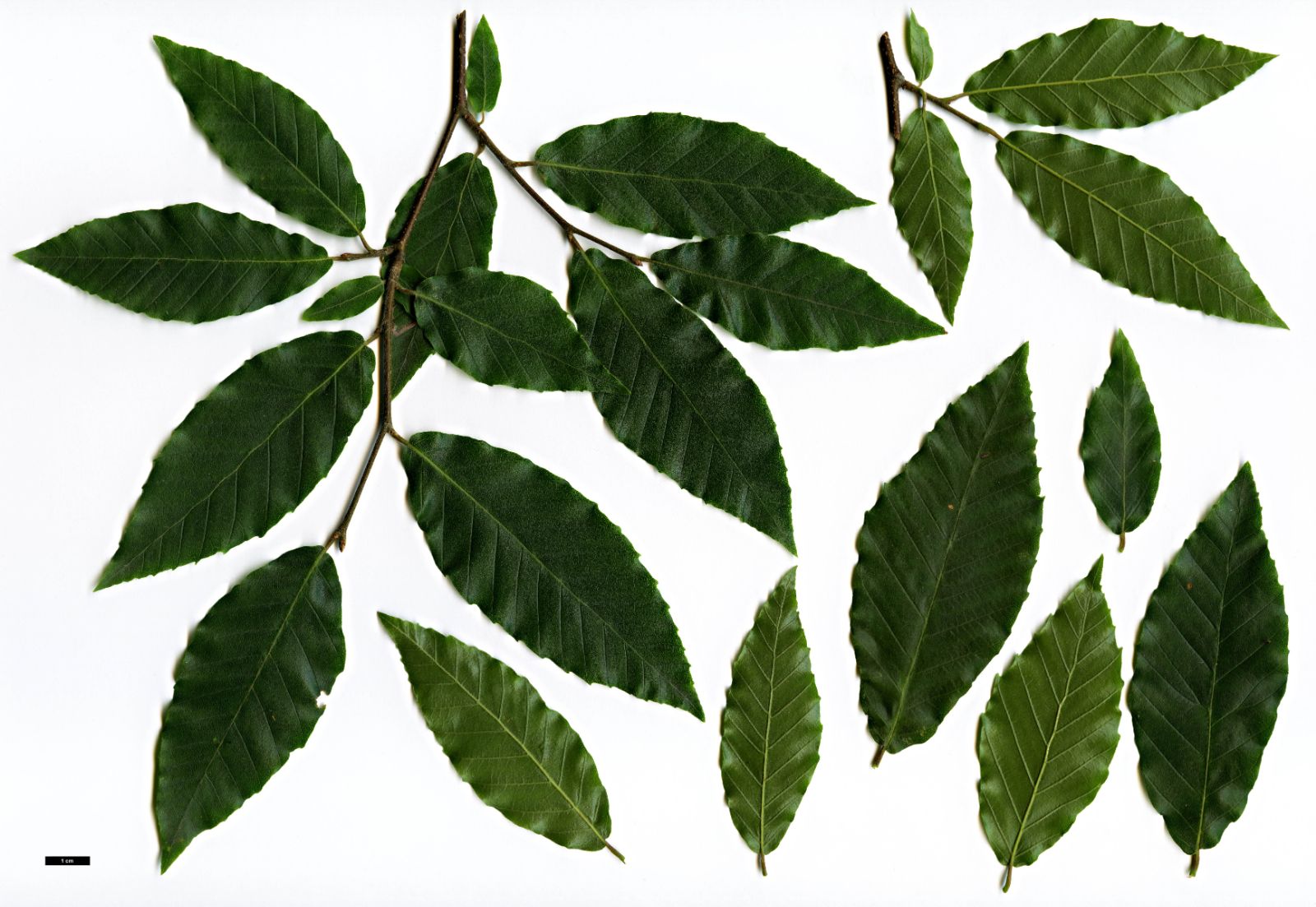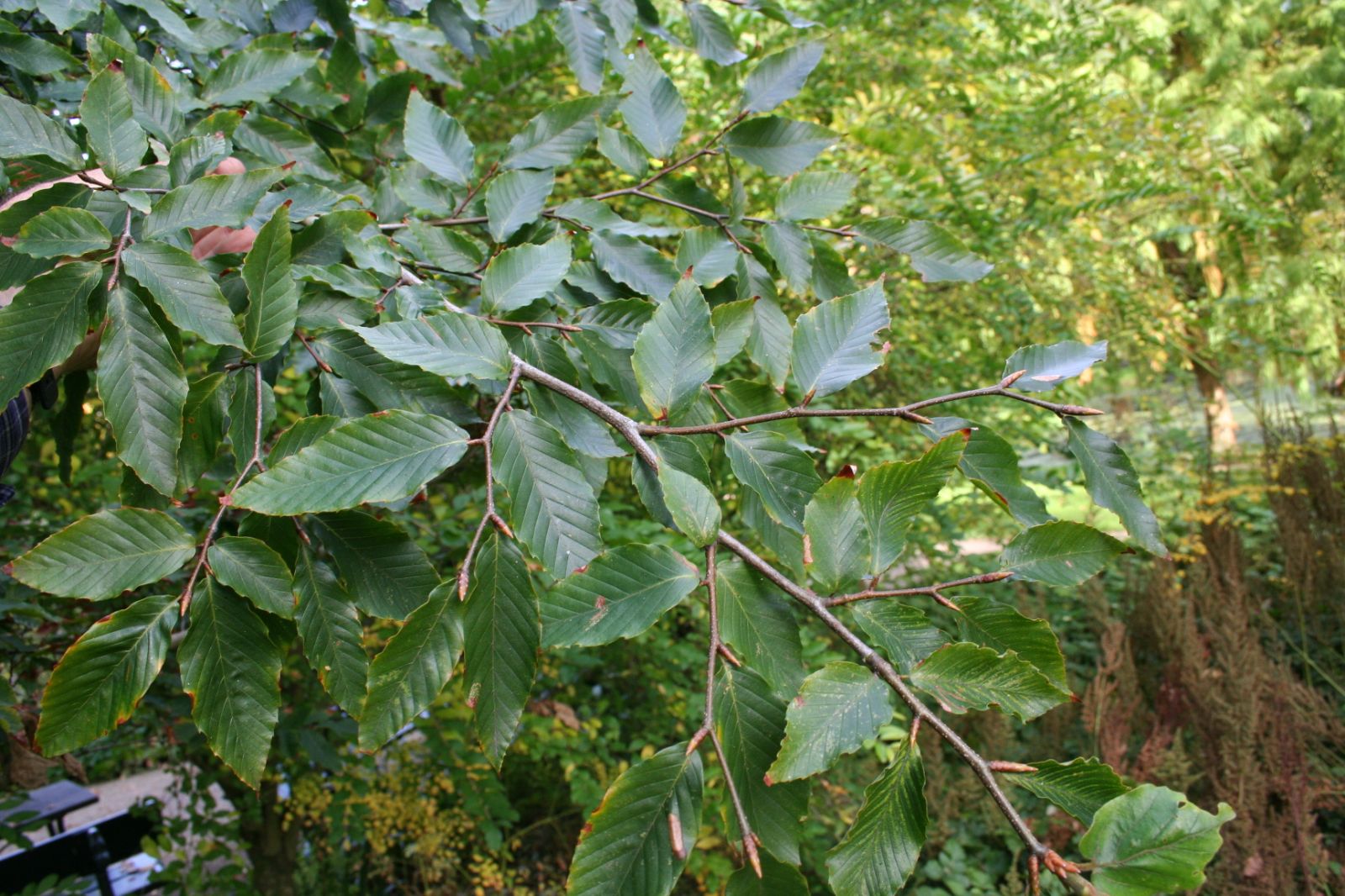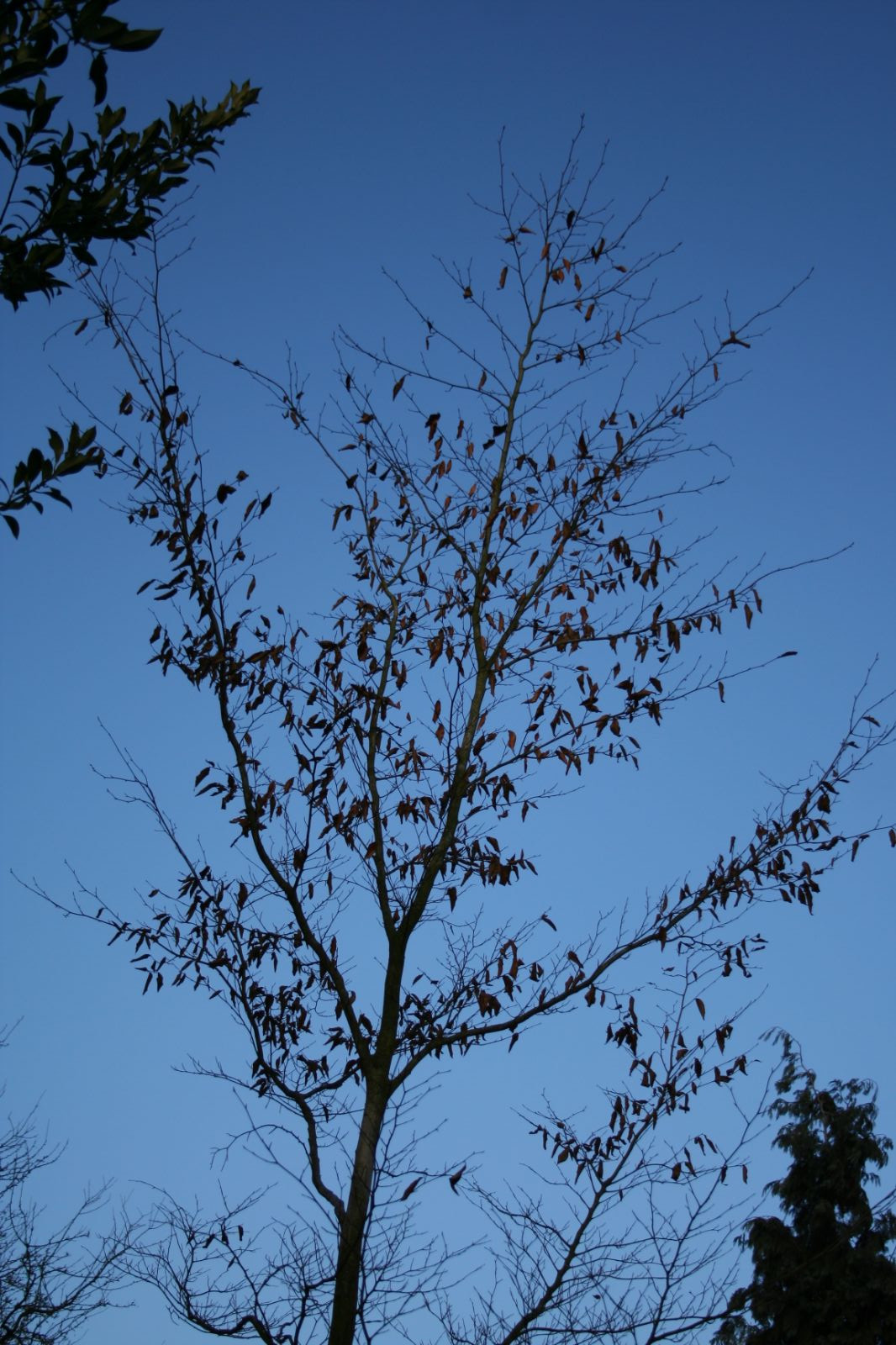Fagus grandifolia
Sponsor
Kindly sponsored by
a member of the International Dendrology Society
Credits
John Grimshaw & Tom Christian (2021)
Recommended citation
Grimshaw, J. & Christian, T. (2021), 'Fagus grandifolia' from the website Trees and Shrubs Online (treesandshrubsonline.
Genus
Common Names
- American Beech
Synonyms
- Fagus americana Sweet
- Fagus ferruginea Ait.
- Fagus grandifolia var. caroliniana (Loudon) Fernald & Rehder
Large tree, to 30(+) × 3.5 m, with a rounded crown, frequently producing suckers from the roots and forming a clonal grove. Bark pale grey, smooth. Branchlets with silky hairs when young, becoming more or less glabrous. Buds to 1.5–2 cm, apex acute, scales few, silky light brown or glabrous. Leaves 6–12 × 2.5–7.5 cm, ovate to narrowly-ovate or obovate, dark green above, paler below, becoming glabrous above, but retaining hairs on the midrib and vein axils below (though varying from almost glabrous to villous), lateral veins in 9–14 pairs, base cuneate, margins sparsely but distinctively toothed, apex sub-acuminate; petiole 4–12 mm, often hairy. Peduncle 16–22 mm. Cupule brown to reddish-brown, 1.5–2(–2.5) cm, with long recurved awns; nuts 1.5–2 × 1–1.8 cm wide, glabrous or puberulent. Flowering April to June; fruiting September to October (North America). (Elias 1980; Bean 1981; Nixon 1997).
Distribution Canada Nova Scotia, New Brunswick, southern Quebec, south east Ontario. United States Eastern states, along the eastern seaboard from Maine south to Georgia, extending inland to northern Wisconin in the north to extreme eastern Texas in the south.
Habitat Rich deciduous or mixed woodland, especially on cooler slopes, 0–1000 (–2000) m, sometimes forming pure woods but often growing in association with other temperate species.
USDA Hardiness Zone 3
RHS Hardiness Rating H6
Conservation status Least concern (LC)
Taxonomic note There is considerable variation in Fagus grandifolia, especially in leaf shape and hairiness. Although variants known as Grey, Red and White Beech are sometimes recognised, Nixon (1997) declined to accept infraspecific ranks for the Flora of North America, considering such variation to be at best clinal and with wide differences within populations. F. grandifolia var. caroliniana (Loudon) Fernald & Rehder has been used for southern populations, allegedly distinct in several features but most prominently their denticulate, more shallowly toothed (vs sharply serrate) leaf margins, and shorter prickles on the fruit husk, to only 2.5 mm (cf. 3–14 mm). Forma pubescens Fern. & Rehd. is said to have permanently downy leaf undersides. The beech from the high mountains of Mexico’s Sierra Madre Occidental is here treated as F. grandifolia subsp. mexicana (Martínez) E. Murray.
The American Beech is one of the most familiar trees of the eastern deciduous forest. It has an extensive native range covering virtually the entire eastern third of the United States and southern fringes of the adjacent Canadian provinces. It is relatively common at low elevations throughout this vast range and sometimes forms pure stands – uniquely for a beech species it can sucker, creating dense clonal thickets – or else associates with species such as Acer saccharum, Betula alleghaniensis, Tilia americana and Pinus strobus (Elias 1980).
Sternberg suggests that American Beech is sensitive, and that even within its native range it can be difficult to cultivate if its exacting requirements cannot be met. He and others recommend that when possible natural seedlings should be left in-situ, or else ‘planted in mesic sites where it can be left alone’ (Sternberg 2004). In his inventory of trees growing in the Dominion Arboretum, Ottawa, Buckley (1980) says of the American Beech ‘if properly pruned when young it should form a more beautiful tree than most others’ and Sternberg (2004) goes on to say that material sourced from northernmost provenances ought to be hardy to USDA zone 3. Its autumn colour is paler than that of F. sylvatica, being more straw-coloured, and the marcescent leaves on young specimens and lower branches can give the eastern woods a pallid glow in late autumn into winter.
Various works (for example Bean 1981; Hillier & Coombes 2002) attest that American Beech was introduced to Britain in 1766, but the details appear to be lost to the mists of time. Elwes & Henry (1906) give no details of the introduction, and other than citing the year 1766 nor does Bean, although he goes on to say that ‘American Beech, like so many other trees of its region, has never been much of a success in Britain and the only example recorded is a rather shrubby tree at Eastnor Castle’ (Bean 1981a).
The tree at Eastnor has grown, albeit a little, from 10.6 m as recorded by Bean, to 14 m × 0.66 m dbh when last measured in 2009. A second tree there is 13 m × 0.71 m dbh and these days The Tree Register lists several other notable examples, some have been known for some time such as individuals at Kew (14 m in 2010), Wakehurst (13 m in 2010) and Durham University Botanic Garden (10 m in 2004) while others, including some of of considerable size, suggest that material has been lurking in collections waiting for somebody to recognise it. A tree planted at Bradenham Hall, Norfolk, in 1973 was 19 m × 0.66 m in 2014 – a telling note ‘Genuine?’ appears with the record, betraying perhaps Owen Johnson’s disbelief. If this individual aroused suspicion then we should be doubly suspicious about five trees growing in Avondale Forest Park, County Wicklow, Ireland, which were measured at and above 28 m in 2004. (Tree Register 2019). If these identifications prove genuine they would be quite remarkable in the context of cultivated trees, but it is far more likely that they have been misidentified.
Provenance may be an important factor in the performance of this species in cultivation, especially in the oceanic climate of the United Kingdom and Ireland, but little if any work has been done on this. Unsurprisingly it appears to fare better in the continental climate of mainland Europe. A tree in the Arboretum Poort Bulten, Overijssel, the Netherlands, was 22 m × 1.2 m dbh in 2017. Another in the park at Waux Hall, Hainaut, Belgium, is in excess of 22 m × 1 m dbh, and one at the Villa Pizzi, Lombardy, Italy, was c. 22 m × 1.4 m dbh in 2015. (monumentaltrees.com 2019).
A handful of cultivars have been released in recent years, and it would appear that all of these are currently confined to cultivation in North America.
'Cameron Weeping'
This dwarf, weeping form of American Beech was introduced in c. 2006. The leaves are said to be relatively large, and retained on the plant late into the season (Hatch 2017). Various American nurseries suggest an eventual height and spread of c. 3–4 m, potentially making this a useful ornamental for smaller spaces. From various descriptions it seems comparable in size and habit to F. sylvatica ‘Tortuosa’, though perhaps more exaggeratedly weeping.
'Ferncliff'
Synonyms / alternative names
DIAMONDBARK™
This clone originated from a mature tree growing in the Ferncliff Cemetary in Springfield, Ohio. It is distinctive in having bark that is shallowly fissured into distinctive diamond or rhomboidal shapes, even on younger wood, comparable to some oak and ash barks. The original tree is open-grown and is described as having a compact, domed crown, and very dark green leaves. It was first noticed by Brian P. Riley of the Ohio Department of Natural Resources Division of Forestry in 2001, and was introduced to the trade in 2006 by several nurseries in Ohio, and one in Oregon. (Hatch 2017, Moore 2010).
subsp. mexicana (Martínez) E. Murray
Common Names
Mexican Beech
Haya
Synonyms
Fagus mexicana Martínez
Fagus grandifolia var. mexicana (Martínez) Little
Tree to 35 m, 1.1 m dbh. Bark grey with white spots. Buds shiny brown and to 0.9 cm long with overlapping scales. Leaves leathery, 5–8 × 3–5 cm, elliptic, margins crenate to dentate, apex acuminate; petiole 0.6 cm long. Nuts two, 1.2–1.3 cm long. The Mexican Beech has smaller leaves and smaller nuts than the American subspecies (in subsp. grandifolia, leaves 6–12 × 2.5–7.5 cm, nuts 1.5–2 cm long). Flowering March to April, fruiting July to August (Mexico). (Little 1965, López Mata & Cházaro Basáñez 1995).
Distribution
- Mexico – In the Sierra Madre Occidental, from southern Tamaulipas to Hidalgo and Puebla.
RHS Hardiness Rating: H5
USDA Hardiness Zone: 7b-8
The Mexican Beech or Haya is one of the ‘temperate’ trees forming the forests of the Sierra Madre Occidental, that make this area so interesting to the botanist and plant explorer. It is, however, extremely rare there and has been the subject of much research. Neither is it common in cultivation, but there are some specimens scattered through collections in our area. In 1995 Raulston, Fairey and Schonfeld reported it as new to cultivation and showing good tolerance to heat stress, although with the potential problem of frost damage to the early-emerging shoots (Raulston et al. 1995). This prediction seems to have been confirmed with the passage of time, since the Mexican Beech seems no longer to be cultivated in eastern North America. There is, however, a specimen at Berkeley, from a Fairey collection in Tamaulipas in 1991, suggesting that the mild Bay Area climate is more favourable. On the other hand, a tree grew well at the Arboretum Trompenburg for some years: donated by J.C. Raulston in 1994, it was 4.5 m in 2005, and 8 m when it suddenly died in 2017. Fortunately it was propagated before its untimely demise and an offspring in the nursery is c. 3 m in 2020. Interestingly, this material retains its green leaves until very late, often not colouring or falling until January. (G. Fortgens pers. comms. 2005, 2020).
Although F. grandifolia s.l. is listed as Least Concern by the IUCN, subsp. mexicana is restricted to 10 populations (of 2–35 hectares) in the Sierra Madre Occidental (Williams-Linera et al. 2003). Studies of these trees have shown surprising levels of genetic variation when compared with American subsp. grandifolia (Rowden et al. 2004), and a higher conservation status may be warranted.
'Umbrella'
This imaginatively named selection forms a small tree or large shrub with a compact umbrella-shaped canopy. ‘White Lightning’ is a very similar clone which was released at about the same time by the JC Raulston Arboretum. (Hatch 2017).

